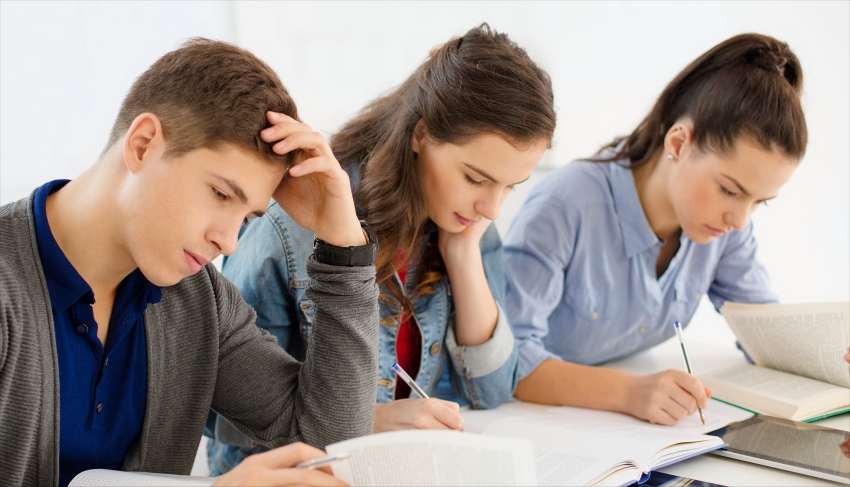This article first appeared in the February 2014 issue of The LINK, the online newsletter from the Center for Teaching, Learning, and Technology.
Claire Lamonica regularly shares her observations on student learning, instructional trends, and life in the academy. You can read past installments of “From the Director’s Desk” at CTLT.IllinoisState.edu/News/Director.
————-
I know many of you share my disappointment that the keynote speaker for the 2014 Teaching & Learning Symposium, Ken Bain, was forced to cancel his appearance due to the “polar vortex” that caused flight cancellations across the country. The good news is that many symposium attendees received copies of Bain’s book, What the Best College Students Do, as either door prizes or gifts for presenters. I hope some of you will find time to read it this semester or over the summer.
It was something of a happy coincidence that, having recently read Bain’s book myself, I opened my email the other day to find a Faculty Focus article entitled, “Seven Characteristics of Good Learners,” by Maryellen Weimer. Weimer begins by asserting that (Bain’s book notwithstanding), “I’ve seen lots of lists that identify the characteristics of good teachers. … I haven’t seen many corresponding lists that identify the characteristics of good learners.” So she accepts the challenge and creates her own list of what “could be (such) a list for our students or anybody who aspires to learn.” Good learners, Weimer says …
- are curious
- pursue understanding diligently
- recognize that a lot of learning isn’t fun
- are frightened by failure, but know it’s beneficial
- make knowledge on their own
- never run out of questions
- share what they’ve learned
While I have some questions about this list (e.g. what’s the difference between “curious” and “never runs out of questions”? and “do good learners really think that learning isn’t fun?”), I imagine that if Bain were to create a similar list based on his research, it would include many, if not all of these characteristics.
It’s always difficult to harvest “sound bites” from Bain’s work, but in What the Best College Students Do, he does note that, among other things, the best college students …
- “learn to question in different kinds of ways” (219)
- “take a deep approach to learning” (44)
- “thrived [in school] because they found … pleasure … within themselves, took control of their own thinking, reframed the world, and pursued it with vigor”(84)
- “acknowledge their failures, even … embrace them, and … explore and learn from them” (100)
- “generate new theories from what they know already , and then imagine ways to test their hypothesis (sic)” (156)
- “define themselves … as creative, curious, compassionate, concerned, and caring human beings, citizens of the world” (220)
As you can see, it’s possible to find research in Bain’s work that supports Weimer’s intuitions.
Weimer goes on to state that “good teachers model this kind of learning for their students,” and while I’m sure that’s true, I also think it’s a little more complicated than that. Good teachers may start by modeling behaviors they want their students to emulate, but they also adapt their teaching to incorporate strategies that support—even foster—these behaviors in their students. In other words, “the best college teachers” create environments that foster the development of “the best college students.”
What might those environments look like? Well, this is just a first stab, but it’s a stab based on research: Learning environments that support and foster good learners
- encourage—even require—students to ask questions
- allow students to engage deeply with ideas, concepts, and what Bain calls “messy problems” (133)
- design learning experiences that maintain that delicate balance between challenge and skill, resulting in what Mihaly Csikszentmihalyi calls “flow” or “optimal experience”
- provide opportunities for students to fail without penalty and learn from their failures
- include opportunities for the creation of knowledge rather than the regurgitation of knowledge
- allow learners to become teachers or to otherwise put their learning to use in ways that benefit others
Let’s give all our students the support they need to become “the best”! If you need help implementing ANY of these strategies into your teaching, CTLT is here to help. Give us a call to schedule an Instructional Strategy Consultation at your convenience. We may also be able to point you to CTLT programs or events featuring some of these approaches.
Another way we can help is by continuing our efforts to bring Bain to campus. We’re in negotiations about that right now, and hope to have good news to share within the next few weeks. Watch for more details as soon as we have them!
Happy teaching, happy learning,


